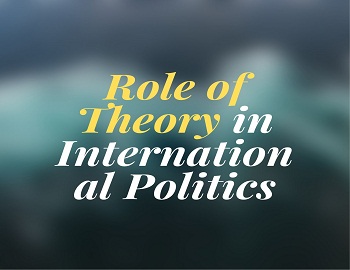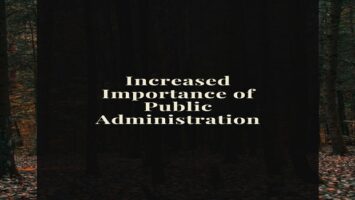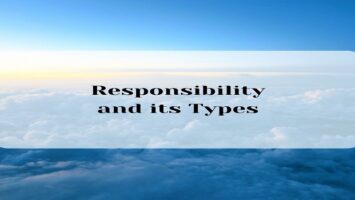Administrative Functions of the Chief Executive:
The chief executive has to perform a number of administrative functions. Luther Gullick advocates the use of the term ‘POSDCORB’ coined by him for describing the administrative functions of the chief executive. The term POSDCORB stands for seven administrative functions- Planning, Organizing, Staffing, Directing, Coordinating, Reporting, and Budgeting.
Planning, i.e., working out in outlining the things that need to be done and the methods for doing them to accomplish the purpose set for the enterprise.
Organizing, i.e., the establishment of the formal structure of authority through which work-sub-divisions are arranged, defined, and coordinated for securing the defined objective.
Staffing, i.e., the whole personnel function of bringing in and training the staff and maintaining favorable conditions of work.
Directing, i.e., the continuous task of making decisions and embodying them in specific and general orders and instructions and serving as the leader of the enterprise.
Coordinating, i.e., the all-important duty of inter-relating various parts of the work.
Reporting, i.e., keeping those to whom the executive is responsible informed as to what is going on, which, thus includes keeping himself and his subordinates informed through records, research, and inspection.
Budgeting, i.e., all that which goes with budgeting in the form of fiscal planning, accounting, and control.
While analyzing the administrative functions of the Chief Executive as the general manager of the state, Willoughby suggests that he had to perform the following functions:
(1) The Chief Executive has to ensure the operation of the principle of making purely administrative officers as subordinates and subject to the superior authority of the chief executive.
(2) Heads of administrative services are to be appointed and removed by him.
(3) The Chief Executive is to exercise control over the institutional activities of the administrative services.
(4) All administrative reports have to be submitted by or through the Chief Executive.
(5) The budget has to be prepared and submitted by the Chief Executive to the legislature for discussion and enactment into an authoritative allocation.
We can describe the administrative functions, which are mostly performed by the Chief Executive, under the following heads:
(1) Formulation of Administrative Policy- One of the major functions of the Chief Executive is the determination and formulation of administrative policy. An administrative policy is, as Gladden observes, “the form in which the ministerial administrator or a board carries the will of the government into effect.” He formulates specific plans which enable the administrative officers to perform their duties in a proper manner. The ability and personality of the Chief Executive bring efficiency to the administration. The legislature determines the general policy in general terms. It is the Chief Executive that gives it a due shape and fills it with all details. In other words, the Chief Executive determines the administrative policy needed for carrying out the governmental policies and plans.
(2) To control the Finances- Fiscal control and management also form a part of the administrative functions of the Chief Executive. It is his duty to prepare the budget and submit it to the legislature for approval. He has to make a full report regarding past operations and present conditions and to make statements regarding provisions made for meeting the revenue and expenditure needs of the government in the future. The whole exercise is called budgeting. In other words, the Chief Executive prepares the budget. He gets the budget approved by the legislature and then implements it through administrative policies and actions. It is his responsibility to secure the realization of budgetary targets.
(3) To supervise and control the operation of the Administration- It is the duty of the Chief Executive to supervise and control the entire administration. The purpose of supervision and control is to ensure that every individual in the whole administrative organization does his work efficiently and according to the plans and policies issued by the chief executive. He has to issue instructions, ‘warn’ when the work is not being done properly, and ‘encourage’ when it is running smoothly. He monitors the implementation of the policies and initiates steps to plug the loopholes and errors. He enforces discipline among the staff and gets the work done through effective supervision and control.
(4) Public Realtions- Public administration is responsible to the people. As such, it has to keep the people well-informed about its policies and programmes and remove the misunderstandings if any. For this reason, the Chief Executive functions as the spokesman of the administration by enunciating public policies and keeping the public informed of all important and major administrative decisions. He maintains relations with the press, various interest groups, voters, and the legislature. Healthy public relations are an essential need for keeping the administration healthy, efficient, and productive of desired results. The Chief Executive has the duty to conduct public relations in a befitting manner.
(5) To maintain a proper system of Communication- The Chief Executive has to maintain a proper communication link between him and other departments of the organization. For a successful working of an organization, it is important that information may flow from the superiors to the subordinates and vice-versa. Timely, clear-cut, and regular communication of all information to different parts of the administrative system alone can secure an integrated and effective attempt for securing the purpose of the organization.
(6) Issuing Directives, Proclamations, and Orders- For caring out the work of administration, the Chief Executive issues orders and directions to the personnel and units of the organization, The kind, nature, and number of these directives, proclamations, and orders issued by the Chief Executive set up the tone of the administration.
According to L. D. White, “In any official organization, the impulse to action comes from orders from above.” He issues these orders and directions either directly or through delegation of authority to his subordinates who are, however, occupying key and responsible positions in the administrative hierarchy.
(7) Appointment and Removal of Personnel- The Chief Executive has the power to appoint the personnel. These appointments include the appointment of heads of departments and other key officials. It is on his behalf that other appointments are made by his subordinates acting under the powers delegated to them. In public and private organizations key appointments are made by the Chief Executive. In India, all important appointments are made by the Chief Executive. It is the responsibility of the Chief Executive to see that the heads of different departments are performing their duties sincerely and efficiently. While the political heads are appointed by the Chief Executive directly in accordance with the provisions of the constitutions, the appointments of the civil servants are made on the basis of duly made selections as recommended by the public service commission of the state. All provisions of personnel are made by him.
He can initiate disciplinary action against the personnel considered guilty of inaction or inefficiency or corruption or maladministration. He can constitute inquiry commissions or get departmental inquiries made against the erring employees. He can award punishment, order transfers, demotions or suspensions, or dismissals from service. The power of dismissal of public servants has to be exercised in the interest of administrative efficiency. But for this, he has to follow the set procedures and norms.
(8) Coordination of various Executive Activities- One of the most important functions of the Chief Executive is to coordinate the working of the different parts of the organization. Modern administration consists of various departments, commissions, and sections, each performing a specialized part of the function. In order to create uniformity, unity, and efficiency in the administration, coordination is needed. Conflicts and differences are usual happenings in a modern administration. The Chief Executive settles conflicts and brings harmony. In fact, conflict resolution through coordination is a vitally important and highly useful function of the Chief Executive. His verdict has to be respected and obeyed by all officials or units engaged in the conflict. Thus, coordinating is the supreme responsibility of the Chief Executive. He is the coordinator-in-chief of the administration.
(9) Leadership- The Chief Executive is the leader of the administration and he provides leadership to it. The quality of administration depends upon the vigor and energy with which he leads it. He must have a high moral character, the capacity to judge, the capacity to inspire confidence, decisiveness, and other qualities of leadership. The impact of leadership on the administration can be assessed from the fact that a change of leadership at the chief executive level always produces a change in the internal and external environments and working of the administrative system.
To sum up, we can say that in every state, the Chief Executive performs a wide variety of political and administrative functions. To plan, supervise, coordinate, and secure results, all are his functions. Some of the key managerial functions are performed by him directly. He also gets many functions performed by others. Through the performance of these functions, the Chief Executive plays a major role in the working of the administration as a whole.









Comments (No)